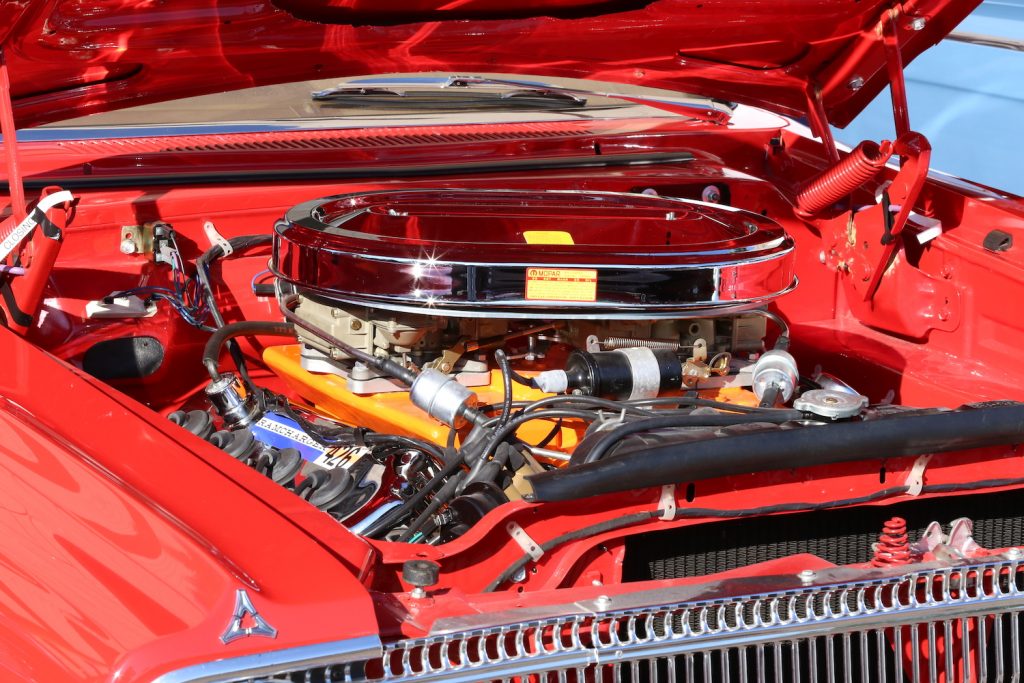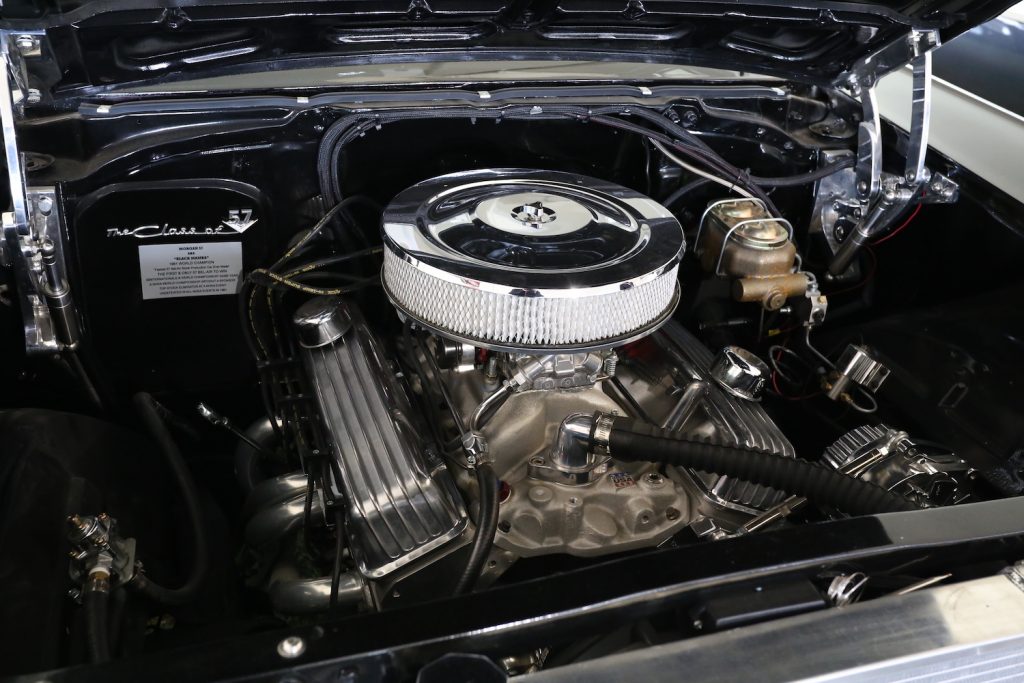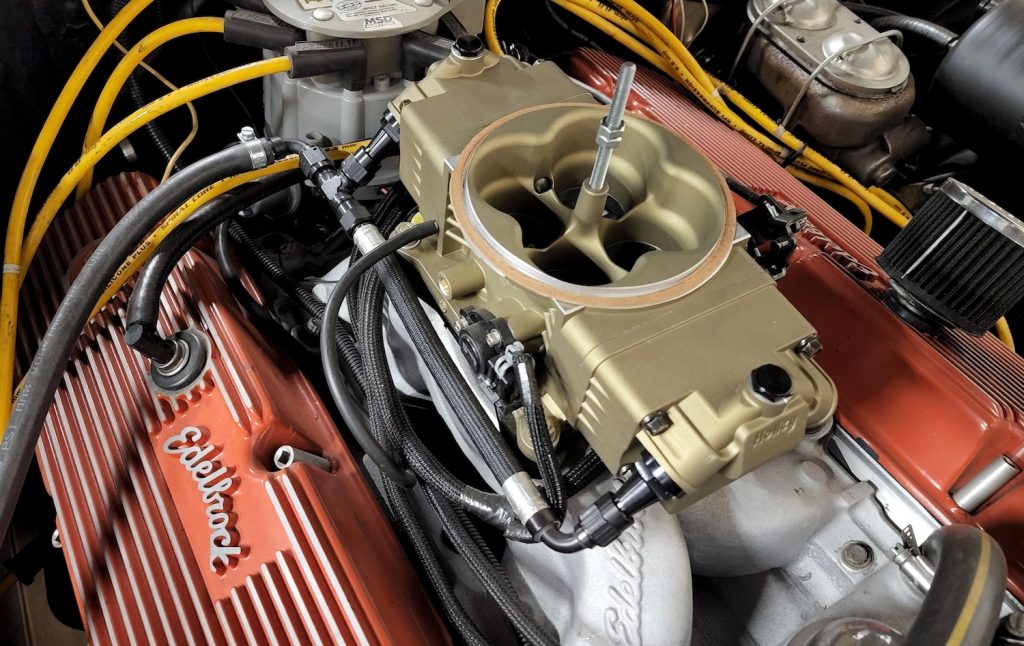Chances are, if you have a classic American car or truck in your garage, you have a carburetor sitting underneath its air cleaner.
The world’s a much different place than it was in the 1960s, and thanks to a robust aftermarket built up of performance companies that see their own growth linked to adapting new tech to old cars, there are a bunch of options out there now to convert basically any carbureted classic over to modern injection.
But should you?

A friend called me this week to ask what I thought regarding his own project car. And while I was sorting out my thoughts, I realized that there’s more to it than budgets and looks. It’s a fundamental question that gets right to the heart of the old car experience.
Evolution of Power
I should preface this with a quick note: Like most of you, I had 4-bbl carbs on my old cars for decades, so I know their benefits and I know their quirks. That said, the last three cars and trucks I’ve built have all been Holley injected, and the last two had multi-port LS V8 power.
Does that mean carbs are out? Not at all. I love carbs as much as ever — particularly in old cars that are mostly stock. But when it has come to my own personal builds, I’ve ventured far enough away from stock specs to lose any hang-up I might have had over keeping a carburetor. To be honest, I wanted to see how good the modern systems could be. Spoiler alert: They’re fantastic. Ease of use via a properly tuned injection system will have you using your classic more than ever. But these systems are not for everyone.
A complete modern injection system, such as the Sniper setups offered by Holley, run about $1,500. For that money, you get modern-day drivability. They allow engines to start instantly in just about any weather, and they don’t need much in the way of warm-up. They tend to achieve better mileage than carbs overall thanks to their precise control over fueling. These systems use oxygen sensors and modern programming to tune themselves, which means that they’re generally plug-and-play once installed. They don’t tend to produce the stinky, rich exhaust that you get with a carburetor that’s on the choke, and they include idle air control valves, which maintain your target idle RPM regardless of engine load. Beyond all that, they’re getting less intrusive in terms of looks. Nothing about them, apart from return fuel lines and oxygen sensor installation, is very intrusive to the car. You can always swap everything back to stock at some point in the future.
So with a modern injection system on your classic Mustang or Chevelle, you can hit the key, get a stable idle RPM right away, get great drivability even when cold, and use less fuel overall while maximizing the engine’s available power.
That’s all fancy, right? It sounds great, and it’s worth the price you pay to get it — but you might not realize that some of the quirks that you’re eliminating with modern injection are more important than you think. You have to ask yourself what it is about your old cars that you like most. Why do you keep one around in the first place?

Chasing Quirks
Is an old car still an old car if it starts and runs like a new car? And by that I don’t mean a ’65 Mustang that starts like it’s a year old — I mean a ’65 Mustang that starts like a 2022 Mustang. There’s something lost in that translation, even if it’s mostly stinky, high-idle starts and part-throttle bogging until warm. All that stuff has been part of the experience for decades — it’s just part of what you deal with when owning an old car — and believe it or not, it’s something that I sometimes miss in my injected cars. In that sense, better isn’t always better. There’s some appeal in quirks, especially in today’s electrified user-friendly world. Sometimes imperfection is the thing to be chased, especially if it’s authentic to the experience you’re looking for.
At the end of the day — and like I told my friend — there’s no right answer here. It really comes down to the purpose your old car serves for you. Are you here for the performance and the style, or are you here for a sense of how things were both when the car was new and when it became classic?
That said, if you haven’t driven an injected muscle car yet, it’s time to give one a try.















More Stories
Cars to Watch in Arizona
A Look Inside SEMA 2024
The Future of Muscle